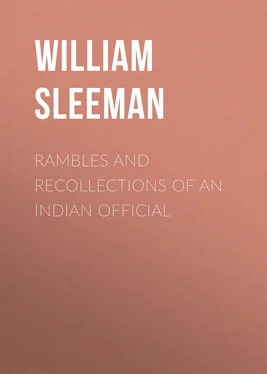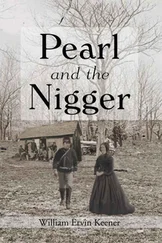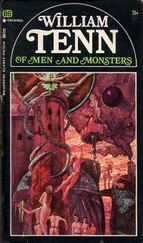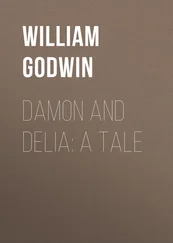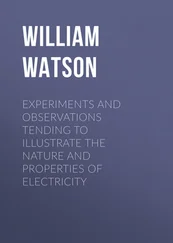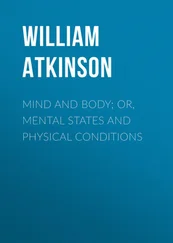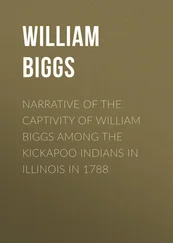William Sleeman - Rambles and Recollections of an Indian Official
Здесь есть возможность читать онлайн «William Sleeman - Rambles and Recollections of an Indian Official» — ознакомительный отрывок электронной книги совершенно бесплатно, а после прочтения отрывка купить полную версию. В некоторых случаях можно слушать аудио, скачать через торрент в формате fb2 и присутствует краткое содержание. Жанр: Путешествия и география, История, foreign_edu, foreign_antique, foreign_prose, на английском языке. Описание произведения, (предисловие) а так же отзывы посетителей доступны на портале библиотеки ЛибКат.
- Название:Rambles and Recollections of an Indian Official
- Автор:
- Жанр:
- Год:неизвестен
- ISBN:нет данных
- Рейтинг книги:4 / 5. Голосов: 1
-
Избранное:Добавить в избранное
- Отзывы:
-
Ваша оценка:
- 80
- 1
- 2
- 3
- 4
- 5
Rambles and Recollections of an Indian Official: краткое содержание, описание и аннотация
Предлагаем к чтению аннотацию, описание, краткое содержание или предисловие (зависит от того, что написал сам автор книги «Rambles and Recollections of an Indian Official»). Если вы не нашли необходимую информацию о книге — напишите в комментариях, мы постараемся отыскать её.
Rambles and Recollections of an Indian Official — читать онлайн ознакомительный отрывок
Ниже представлен текст книги, разбитый по страницам. Система сохранения места последней прочитанной страницы, позволяет с удобством читать онлайн бесплатно книгу «Rambles and Recollections of an Indian Official», без необходимости каждый раз заново искать на чём Вы остановились. Поставьте закладку, и сможете в любой момент перейти на страницу, на которой закончили чтение.
Интервал:
Закладка:
General Hervey records seven modern instances of strangulation by Megpunnia Thugs in Rājputāna ( Some Records of Crime (1867), vol. i, pp. 126-31).
185
November, 1835.
186
In the Damoh District, twenty-four miles west of Damoh. The name appears to be derived from the 'great quantity of hewn stone (Hind. patthar or pāthar ) lying about in all directions'. The C. P. Gazetteer (1870) calls the place 'a considerable village'.
187
A peculiar formation, of 'widespread occurrence in the tropical and subtropical regions of the world'. It is ordinarily of a reddish ferruginous or brick-dust colour, sometimes deepened into dark red. Apparently the special character which distinguishes laterite from other forms of red-coloured weathering is the presence of hydrous oxide of alumina in varying proportions. . . . 'Though there is still a great deal of uncertainty about the way in which laterite was formed, the facts which are known of its distribution seem to show that it is a distinct form of weathering, which is confined to low latitudes and humid climates; its formation seems to have been a slow process, only possible on flat or nearly flat surfaces, where surface rain-wash could not act' (Oldham, in The Oxford Survey of the British Empire , vol. ii, Asia, p. 10: Oxford, 1914). It hardens and darkens by exposure to air, and is occasionally used as a building stone.
188
The Sāgar mint was erected in 1820 by Captain Presgrave, the assay master, and used to employ four hundred men, but, after about ten or twelve years, the business was transferred to Calcutta, and the buildings converted to other uses (C. P. Gazetteer , 1870). Mints are now kept up at Calcutta and Bombay only. The Biās is a small stream flowing into the Sunār river, and belonging to the Jumna river system. The name is printed Beeose in the original edition.
189
Since the author's time the conditions have been completely changed by the introduction of railways. The East Indian, Great Indian Peninsular, and other railways now enter the Nerbudda Valley, so that the produce of most districts can be readily transported to distant markets. A large enhancement of the land revenue has been obtained by revisions of the settlement.
190
Details will be found in the Central Provinces Gazetteer (1870). The references are collected under the head 'Iron' in the index to that work. Chapter VIII of Ball's Economic Geology of India gives full information concerning the iron mines of the Central Provinces and all parts of India. That work forms Part III of the Manual of the Geology of India .
191
The soil of the valley of the Nerbudda, and that of the Nerbudda and Sāgar territories generally, is formed for the most part of the detritus of trap-rocks that everywhere covered the sandstone of the Vindhya and Sātpura ranges which run through these territories. This basaltic detritus forms what is called the black cotton soil by the English, for what reason I know not. [W. H. S.] The reason is that cotton is very largely grown in the Nerbudda Valley, both on the black soil and other soils. In Bundēlkhand the black, friable soil, often with a high proportion of organic matter, is called 'mār', and is chiefly devoted to raising crops of wheat, gram, or chick-pea (Cicer arietinum ), linseed, and joār ( Holcus sorghum ). Cotton is also sown in it, but not very generally. This black soil requires little rain, and is fertile without manure. It absorbs water too freely to be suitable for irrigation, and in most seasons does not need it. The 'black cotton soil' is often known as regur , a corruption of a Tamil word. 'The origin of regur is a doubtful question. . . . The dark coloration was attributed by earlier writers to vegetable matter, and taken to indicate a large amount of humus in the soil; more recent investigations make this doubtful, and in all probability the colour is due to mineral constitution rather than to the very scanty organic constituents of the soil,' It may possibly be formed of 'wind-borne dust', like the loess plains of China (Oldham, in The Oxford Survey of the British Empire , vol. ii, Asia, p. 9: Oxford, 1914).
192
The land revenue has been largely increased, and the resources and communications of the country have been greatly developed during the last half-century. The formation of the Central Provinces as a separate administration in 1861 secured for the Sāgar and Nerbudda territories the attention which they failed to obtain from the distant Government of the North-Western Provinces. Sir Richard Temple, the first Chief Commissioner, administered the Central Provinces with extraordinary energy and success.
193
Rājā Chhatarsāl Bundela was Rājā of Pannā. The history of Chhatarsāl is related in I.G. (1908), vol. xix, p. 400, s.v. Panna State. In 1729 he called in the Marāthās to help him against Muhammad Khan Bangash, and when he died in 1731 rewarded them by bequeathing one-third of his dominions to the Peshwa. The correct date of his death is Pūs Badi 3, Samvat 1788 ( Hamīrpur Settlement Report (1880), note at end of chapter 2). The date is often given inaccurately.
194
Chitrakōt, in the Bānda district of Bundēlkhand, under the government of the United Provinces of Agra and Oudh, and seventy-one miles distant from Allahabad, is a famous place of pilgrimage, much frequented by the votaries of Rāma. Large fairs are held there.
195
The performance of miraculous cures at the tomb is not necessary for the deification of a person who has been specially feared in his lifetime, or has died a violent death. Either of these conditions is enough to render his ghost formidable, and worthy of propitiation. Shrines to such persons are very numerous both in Bundēlkhand and other parts of India, Miracles, of course, occur at nearly every shrine, and are too common and well attested to attract much attention.
196
These observations are as true to-day as they were in the author's time. Disastrous cases of over-assessment were common in the early years of British rule, and the mischief so wrought has been sometimes traceable for generations afterwards. Since 1833 the error, though less common, has not been unknown.
197
Since writing the above, I have seen Colonel Sykes's notes on the formations of Southern India in the Indian Review . The facts there described seem all to support my conclusion, and his map would answer just as well for Central as for Southern India; for the banks of the Nerbudda and Chambal, Sōn, and Mahānadī, as well as for those of the Bām and the Bīmā. Colonel Sykes does not, I believe, attempt to account for the stratification of the basalt; he merely describes it. [W. H. S.]
The author's theory of the subaqueous origin of the greater part of the basalt of Central and Southern India, otherwise known as the 'Deccan Trap Series', had been supported by numerous excellent geologists, but W. T. Blanford proved the theory to be untenable, there being 'clear and unmistakable evidence that the traps were in great part of sub-aerial formation', The intercalation of sedimentary beds with fresh-water fossils is conclusive proof that the lava-flows associated with such beds cannot be submarine. The hypothesis that the lower beds of traps were poured out in a vast, but shallow, freshwater lake extending throughout the area over which the inter- trappean limestone formation extends appears to be extremely improbable. The lava seems to have been poured, during a long succession of ages, over a land surface, uneven and broken in parts, 'with intervals of rest sufficient for lakes, stocked with fresh- water mollusca, to form on the cold surfaces of several of the lava- flows' (Holland, in I.G. (1907), i. 88). A great tract of the volcanic region appears to have remained almost undisturbed to the present day, affected by sub-aerial erosion alone. The geological horizon of the Deccan trap cannot be precisely defined, but is now vaguely stated as 'the close of the cretaceous period'. The 'steps', or conspicuous terraces, traceable on the hill-sides for great distances, are explained as being 'due to the outcrop of the harder basaltic strata, or of those beds which resist best the disintegrating influences of exposure'.
Читать дальшеИнтервал:
Закладка:
Похожие книги на «Rambles and Recollections of an Indian Official»
Представляем Вашему вниманию похожие книги на «Rambles and Recollections of an Indian Official» списком для выбора. Мы отобрали схожую по названию и смыслу литературу в надежде предоставить читателям больше вариантов отыскать новые, интересные, ещё непрочитанные произведения.
Обсуждение, отзывы о книге «Rambles and Recollections of an Indian Official» и просто собственные мнения читателей. Оставьте ваши комментарии, напишите, что Вы думаете о произведении, его смысле или главных героях. Укажите что конкретно понравилось, а что нет, и почему Вы так считаете.
